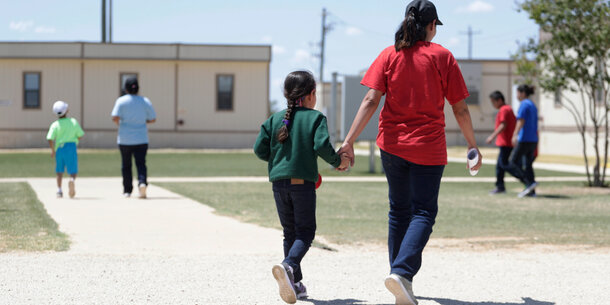New York City has elected a new mayor at a pivotal time for public safety. Like other major cities, New York experienced an increase in crime and anxiety about public disorder during the Covid-19 pandemic. While many of the increases in major crimes have receded, New Yorkers continue to grapple with a number of public safety concerns. These must be taken seriously, and Mayor-elect Zohran Mamdani can play a key role in addressing them. This starts with strategic leadership at the highest levels of city government to prioritize New Yorkers’ safety coupled with a willingness to lead on criminal justice reform.
Appoint Key Leaders
An immediate way the next mayor can influence public safety is by appointing reform-minded leaders to key positions, including the police commissioner, the corrections commissioner, the deputy mayor for public safety, and criminal court judges.
The deputy mayor for public safety oversees the police, corrections, and probation departments. This powerful position can implement data-driven reforms by expanding diversion programs for nonviolent offenses, strengthening civilian oversight of law enforcement, and coordinating mental health crisis response units to reduce police involvement in such calls.
The police commissioner can work to enhance public safety by cutting response times, concentrating more resources in designated high-need neighborhoods and dedicating more attention to improving clearance rates through solving violent crimes that have long remained unsolved.
Provide a Clear Plan for Rikers Island
The new corrections commissioner will have to grapple with the jail complex’s history of abuse and neglect, especially given the pressure to act now that a federal judge has temporarily stripped the city of control over its jail system. Once the judge appoints a “remediation manager” with the authority to enforce compliance with constitutional standards, the mayor should direct the corrections commissioner to ensure full transparency and compliance.
Mamdani should also collaborate with courts to accelerate processing for people held pretrial and reallocate resources to ensure better access to mental health treatment and staff support. And he should provide better clarity over the continually delayed plan to close Rikers.
Fund and Expand Effective Reforms
While new leadership at key agencies is a critical lever, perhaps no tool is more powerful — or better reflects the administration’s priorities — than the city budget. Through the annual budget process, the mayor can shift resources towards successful crime-prevention policies such as violence interruption programs, youth employment, housing assistance, and behavioral health services.
A prime candidate for more funding is a program that sends trained mental health professionals to deal with people in distress instead of or alongside police officers. For too long, police officers have been tasked with responding to a broad spectrum of incidents — from minor disputes to serious emergencies — often serving as the sole responders. One successful program, the Behavioral Health Emergency Assistance Response Division, has been successful so far and should be expanded. The program currently operates 18 teams across about half the city, working 16 hours a day to de-escalate situations. During the program’s pilot phase in 2023, it handled about 25 percent of all eligible 911 mental health calls from January to June. To meet demand, this alternative response model should be scaled up to operate 24 hours a day and citywide. The mayor can also invest in programs like community-based restorative justice and pretrial diversion that have a proven track record of success in lowering recidivism while also building community trust.
The new mayor can also prioritize environmental design upgrades proven to enhance quality of life and strengthen residents’ sense of security. These include better street lighting, green infrastructure, and the creation of more inviting public spaces. These relatively low-cost changes have been shown to improve public safety, particularly in neighborhoods that have borne the brunt of both crime and over-policing. Residents support these types of responses as better balancing the need for accountability with responses that mitigate some of the root causes of crime.
Reestablish City Hall as a Driver of Reform
The Mayor’s Office of Criminal Justice has been a hub for public safety and justice policy reform. Historically, the office has played a key role in implementing successful programs such as alternatives to incarceration, the domestic violence task force, and the rollout of a neighborhood-based jail plan to replace Rikers. It has also been responsible for conducting research to evaluate and inform criminal justice policies, using data-driven analysis to identify effective strategies for reducing crime and promoting fairness while coordinating the implementation of these policies across city agencies.
However, in recent years, this office’s capacity has been weakened by budget cuts and shifting priorities under Mayor Eric Adams, disrupting its ability to lead major reform efforts and respond proactively to emerging public safety challenges. His successor should give the office the support and direction it needs to focus on fairer, more effective approaches to public safety. This includes coordinating investments in housing, mental health care, youth development, and restorative justice as core components of crime prevention. The office can also play a leading role in reviewing how the city allocates its public safety budget, ensuring there are resources to support both enforcement and long-term community safety strategies.
Any public safety strategy must also recognize and integrate the work of the Office of Neighborhood Safety. Created in 2019, it was previously housed within the Mayor’s Office of Criminal Justice and home to key programs such as the Office to Prevent Gun Violence, which supports a network of over 40 community violence intervention organizations across the city, as well as the Mayor’s Action Plan for Neighborhood Safety, which focuses on public safety improvements in 15 New York City Housing Authority developments. While the Office of Neighborhood Safety is now located within the Department of Youth and Community Development, its work remains essential to the city’s approach to violence prevention and neighborhood safety.
The next mayor must ensure that these community-based safety strategies are not siloed or sidelined and instead integrate them into the city’s public safety activities. That means better coordination between various offices and city agencies, such as the police and health departments, to align investments, share data, and sustain what works. This is particularly important in communities most impacted by gun violence and historical disinvestment.
Finally, reforming the justice system also requires partnerships beyond City Hall. While the mayor does not oversee the city’s five district attorney offices, the Mayor’s Office of Criminal Justice has typically served as a bridge — working with prosecutors, courts, and probation agencies to expand alternatives to incarceration, improve early case handling, and ensure community-based options are available and effective.
• • •
Real safety comes from investing in people, protecting rights, and building trust. Mayor-elect Mamdani has an opportunity to show the nation what public safety can look like when it is rooted in data-driven strategies and durable solutions that include targeted interventions and investments in communities.



